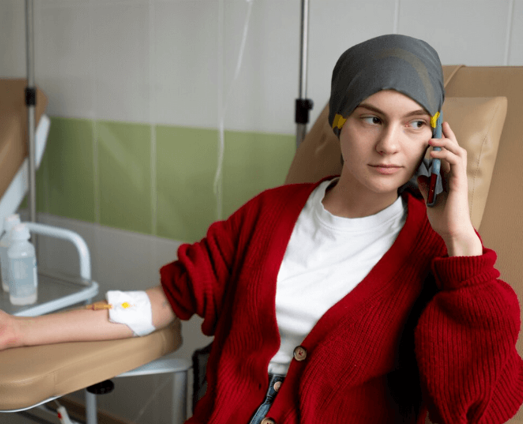Insights from Leading Korean Hair Restoration Clinics
Hairline correction surgery is often associated with cosmetic enhancement, but in South Korea, it also plays a crucial reconstructive role—especially for patients with scalp injuries caused by burns, trauma, surgery, or medical conditions. Korean hair transplant clinics and hospitals are globally recognized for offering advanced surgical solutions that restore both hair growth and self-confidence to patients affected by scarring alopecia and scalp deformities.
👩⚕️ Who Can Benefit from Hairline Correction After Scalp Injuries?
Hairline restoration after injury is suitable for patients who have experienced:
- Burn injuries (thermal, chemical, electrical)
- Surgical scars (from craniotomy, skin grafts, or tumor removal)
- Trauma-induced scarring (accidents, falls, lacerations)
- Radiation or chemotherapy effects
- Autoimmune skin conditions (like lichen planopilaris or discoid lupus erythematosus)
In Korea, these patients are treated with a reconstructive mindset, prioritizing both aesthetic harmony and functional hair restoration.
🔍 How Korean Clinics Approach Injury-Based Hairline Surgery
Korean specialists begin with a thorough diagnostic evaluation, including:
✅ Scalp Assessment
- Digital dermoscopy to examine hair density and follicle health
- Elasticity and blood flow testing to determine graft viability
- Scar classification (hypertrophic, atrophic, keloid)
✅ Donor Area Evaluation
- Healthy hair follicles are usually taken from the back or sides of the head
- In complex cases, body hair (beard or chest) may be used
- Clinics assess total donor capacity and match hair texture for best cosmetic outcome
✨ Surgical Techniques Used in Korea for Scarred Hairlines
Korean hair transplant surgeons combine precision and artistry using various techniques based on scar severity and location:
| Technique | Purpose | Notes |
|---|---|---|
| FUE (Follicular Unit Extraction) | Transplants individual follicular units into scarred or bald areas | Minimally invasive and scarless |
| Micro-punch Grafting | Useful for hardened or tight scars with limited blood supply | Enhances precision in tough tissue |
| Stem Cell-Enhanced Therapy | Boosts graft survival in damaged scalp areas | Often combined with PRP or exosomes |
| Scalp Expansion or Reduction | For large scars or severe contractures | Done by plastic surgery units in Korean hospitals |
| Laser Scar Revision (Pre-Treatment) | Improves skin texture and blood supply before transplant | Fractional CO2 or erbium lasers commonly used |
| Scalp Micropigmentation (SMP) | Adds illusion of density where grafting isn’t possible | Especially effective in camouflaging thin scars |
💡 What Makes Korea a Global Leader in This Field?
Korea’s reputation in medical aesthetics extends to reconstructive excellence due to:
- Close collaboration between dermatologists and plastic surgeons
- Use of high-end microscopes and precision tools
- Customized scar camouflage techniques
- Emphasis on natural hairline design, even in complex cases
- Comprehensive aftercare and healing support
🕐 Procedure & Healing Timeline for Scalp Injury Patients
| Phase | Timeframe | Details |
|---|---|---|
| Consultation | 1–2 weeks before surgery (online or in-person) | Full scalp analysis, planning |
| Surgery Day | 4–8 hours | Performed under local anesthesia |
| Initial Recovery | 1–2 weeks | Swelling, scabbing, aftercare support |
| Visible Growth Begins | 3–4 months | Hair follicles enter anagen phase |
| Final Results | 9–12 months | Full coverage, mature growth pattern |
🧾 Are There Risks? What Korean Doctors Say
Korean clinics emphasize honest risk disclosure, especially when dealing with scarred scalp tissue:
| Risk | Mitigation by Korean Clinics |
|---|---|
| Poor graft survival in scar tissue | Pre-treat with PRP, stem cells, or laser therapy |
| Limited blood flow in thick scars | Staged surgeries with small graft sessions |
| Graft angle mismatch | Digital mapping + microscopic graft placement |
| Unrealistic expectations | Virtual simulation and counseling in advance |
🧳 Special Support for International Patients with Scalp Injuries
Many Korean clinics offer dedicated services for medical tourists needing reconstructive hairline surgery:
- Medical visa support and documentation
- Multilingual staff (English, Mandarin, Arabic, etc.)
- Pre-surgery video consultations
- Post-surgery hotel recovery options
- Virtual follow-up for patients who return home
“Scalp injuries are emotionally and physically complex. Our role is not just to transplant hair—but to restore confidence. That requires precision, compassion, and art.”
— Dr. Kim Hae-jin, Reconstruction Specialist, Seoul
✅ Final Thoughts
Hairline correction surgery in Korea is not just cosmetic—it is a reconstructive solution for patients living with the visible consequences of scalp trauma. Whether you’ve suffered from burns, surgery, or scarring skin conditions, Korean clinics offer world-class expertise in restoring natural hair growth in even the most challenging cases.




